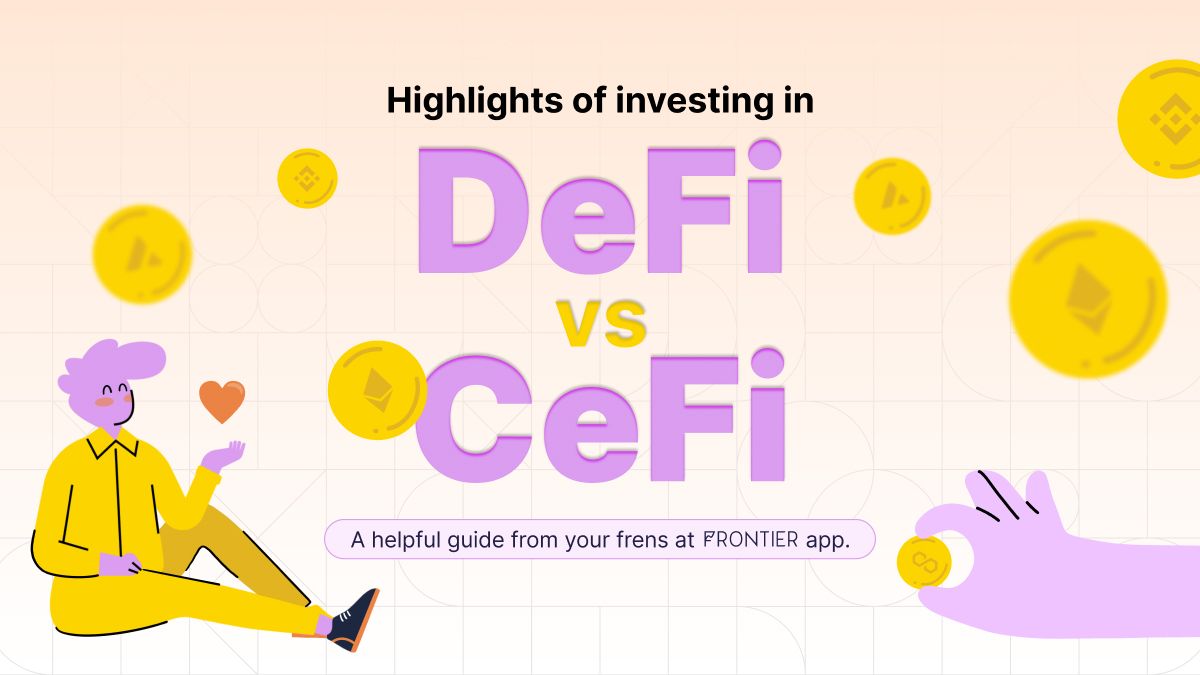

What comes to mind when you think of crypto staking? The book “The Richest Man in Babylon” contains timeless nuggets on wealth creation. The author's advice for building investments was ‘make thy gold to multiply’, in investment circles, this is simply referred to as Compounding! To this end, most people prior to the era of cryptocurrency would invest in stocks. Gold, Treasury bills — TBills, Real Estates, and Savings deposits.
However, the advent of crypto has brought another aspect to multiplying your "gold" called staking. This article explores everything you need to know about crypto staking and how to get started with it.
A brief dive into staking crypto?
In the summer of 2020, projects such as Compound Finance and Uniswap led to the rise of a new crypto sector called decentralized finance (DeFi). DeFi opened the doors to a slew of innovative ways for investors to generate passive income on their crypto holdings without needing to sell to get liquidity. The most popular of these passive income-generating methods is crypto staking which allows users to accumulate more of their base assets without performing any active trading.
Staking is simply a way of putting your crypto assets to work and generating returns. It is the process of depositing and locking your staked assets in a crypto wallet or vault to help maintain the integrity of a blockchain network or protocol. Staking gives users the ability to validate and process transactions on the blockchain network. Stakers are rewarded by receiving a percentage of the fees that the network or protocol generates through block rewards and transaction fees.
It is important to note that not all blockchain networks support staking. Only proof-of-stake (PoS)-based blockchain systems support crypto staking. PoS is a consensus mechanism that selects token holders (validators) within a blockchain network to verify transactions and maintain the integrity of the network. PoS requires participants in the system to lock up a specified amount of the network's native token to validate transactions. Users are able to stake Ethereum 2.0, Cosmos, Tezos, Cardano, etc. as they are PoS networks. But PoW networks like Bitcoin do not support crypto staking.
How staking works
When a user stakes their token, the network utilizes the funds to verify transactions and sign blocks on the blockchain. The Proof of Stake (PoS) blockchain utilizes validators who verify the transactions that go on in the blockchain and delegators who contribute to the security of the blockchain. Delegators contribute their funds through staking to earn rewards and several platforms enable them to do so.
Stakeholders have to pool their funds into a staking pool that allows multiple stakeholders to collate their computational resources and get more rewards. These bag holders increase their chances of getting the rewards if they contribute to a staking pool. The staking pool is similar to a mining pool and it allows its users to earn more rewards.
How to Stake crypto assets on Frontier
To stake as a delegator on a platform like Frontier, users get to select from a choice of validators where they can pool their funds and easily stake crypto directly on various chains from the Frontier app.
Here is how to stake on Frontier
Click "Wallets" - > Select desired asset, for this we will be using "Kava" - > Click on "Stake" - > Tap "Kava" - > Scroll and select a "Validator - > Input quantity - > Click on "Review" - > Review the transaction - > Click on "Stake" - > Input your confirmatory pin
Benefits of joining a crypto staking pool
Crypto staking offers various benefits that make it a popular investment strategy within the crypto ecosystem.
Low barrier to entry
Staked crypto assets require very little effort, and can be done by anyone. There is a slew of staking options for users such as centralized and decentralized alternatives. Also, DeFi aggregating platforms like Frontier further make it extremely easy for users to stake their crypto assets on various blockchain networks.
Flexible passive income generation
There's no limit to how much yield can be generated through staking as an investment vehicle. Staking reward rates can range anywhere from a comfortable 20~50% to over 100000% in DeFi. Therefore covering different user risk appetites.
Eco-friendly
Unlike mining, staking crypto offers a more environment-friendly way to carry out blockchain operations. Staking runs on the Proof-of-Stake network which requires significantly less energy consumption for transaction computation and verification.
Scalable security
Crypto staking provides a scalable way to secure a blockchain network. PoS networks are more flexible than PoW, and accommodate the building of various blockchain solutions.
Types of staking: centralized vs decentralized staking
In staking, you can either do it yourself (DIY staking) or make use of a staking-as-a-service provider. These two options categorize staking into decentralized and centralized staking respectively. DIY staking requires some degree of technical know-how. On Ethereum 2.0 for example, you can run your own node and become a validator by locking up 32 ETH on the network.
Also, a user might opt for using decentralized liquid staking derivatives such as Lido's stETH or Rocket staking pool's rETH, which provide more flexible alternatives. However, there are service providers such as Coinbase and Binance who manage the entire staking process for the average user. Users simply deposit or transfer their crypto assets into the exchange and the provider will handle the rest. These centralized entities retain custody over user private keys. Centralized staking is great for beginners, requires little to no technical knowledge, and provides fast and easy onboarding. But unlike decentralized staking, they pose significant censorship and security risks.
Traditional investment vehicles vs staking rewards
Jason Yanowitz the co-founder of Blockworks in a tweet explores the advantage of the DeFi ecosystem of which staking is a feature. According to Jason, $16 Trillion is yielding negative interest in banks which means that the inflation rate is affecting the bank's ability to even pay profit to its customers for saving. Statistica has the US inflation rate at 6.2% in October 2021 which is incredibly high. In other words, traditional investment solutions such as savings accounts are yielding low-profit margins for investors.
If we take a look at Bonds and the profit attached to them, this image from Bloomberg below shows the low-profit margin as compared to staking options. Even though Treasury bills, which mature in a year or less, have different quotes from bonds, this doesn't stop them from having low-profit margins. T-bills are quoted based on a 360-day/year rule and at a discount from face value which means if you purchase 80 T-Bills at 0.08 it will be calculated at 0.08х80/360=1.78.
On the flip side, stablecoin staking on Centralised Exchanges offers profits from 6% and above.
On Frontier, investors get the choice of selecting from a basket of blockchains that keeps adding up. Beyond just choosing from several staking options from different protocols, investors also get to select the staking pool they want to invest in and how much APR they want at the end of their vesting period. For instance, validators of Matic on Frontier offer about 12% APR for staking while Harmony offers as low as 7.93% to as high as 46.64 on some of its validators and users can stake directly on the platform.
Wrapping up
The ability to earn yields on your staked assets without doing any extra work is incredibly valuable. This is why crypto staking has continued to be increasingly popular among investors and users in the crypto space. Additionally, by providing a solution to the high energy demands of the traditional proof-of-work systems, staking is positioned to be the future of blockchain networks. This is already evident in the variety of proof-of-stake consensus derivatives being adopted such as Delegated Proof-of-Stake (DPoS), and Proof-of-Authority (PoA). Frontier is working to reduce the barrier to entry into DeFi crypto staking to effectively zero.
Currently, staking is an exciting option for crypto investments and more investors are trooping into it. There is a $67 Billion total locked value currently staked in crypto despite the market downtrend. With the continuous growth of the crypto/DeFi ecosystem, it is not too far-fetched to envision a future where more individuals choose cryptocurrency as an investment vehicle rather than traditional options.
A future where owning a crypto app is an easier option for carrying out all financial activities from saving to lending to investment than walking into a local bank. Also, cryptocurrency offers more profits and interest as well as possesses little to no entry barriers for users.


Head, Communications & Content






